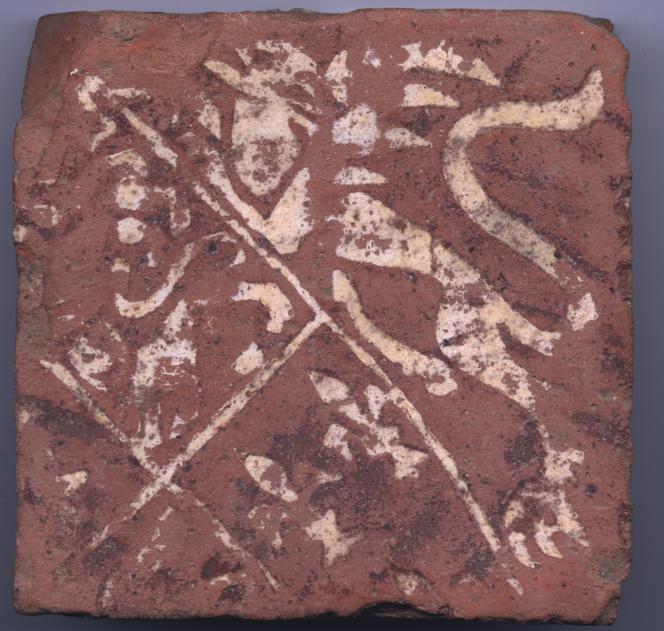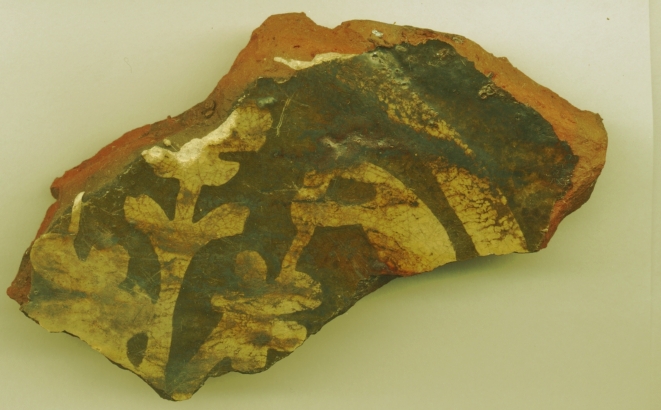Various inlaid tiles from the medieval period have been found around sites in Bridgwater. The best collection of inlaid tiles in the area can now be seen at Cleeve Abbey.
Medieval decorated inlaid tile from Friarn Meadow, Bridgwater

This inlaid tile is 127-130mm square (5 inch) and 22mm thick. It was recovered at the site of the old Friary.
Clear or brown glaze dribble down edge by griffin’s tail with specks of clear/brown glaze on face of tile in depressions
Sanded back with no depressions.
Smooth sides, cut with slight bevel and with some striations esp along edge at top of griffin’s head
Uniform fine light red-brown, with some small vesicles on broken corner
Sketches of tile fragments from the same collection, made by the owner

Medieval decorated inlaid tile fragment recovered from George Street, Bridgwater


This inlaid tile is similar to that illustrated supra in Ward Perkins JB, Proc Som Arch Nat Hist Soc 1941, LXXXXVII, Plate IX 4 and described as a variant of Cleeve, No 25 viz “a version of a very common Wessex design, which is found in a wide number of varieties “. The tile is illustrated in Harcourt J, J Brit Arch Assoc 2000, 153 52 as no. 44 of Group 5 and 6.
Lowe BJ, in “decorated Medieval Floor Tiles of Somerset, ” 2003 ISBN 086 183 366 X illustrates the tile on p.78 code 147 and describes a Glastonbury Abbey example (p25) “Addorsed birds in a circle with their beaks touching leaves of sprouting tree and arrowheads in corners.”. Four scoop keys are present. In the George St fragment, there is part of one scoop.
Date: late thirteenth century.
For the full Bridgwater collection see this page at the Blake Museum.
Dr Peter Cattermole 11 December 2002.
